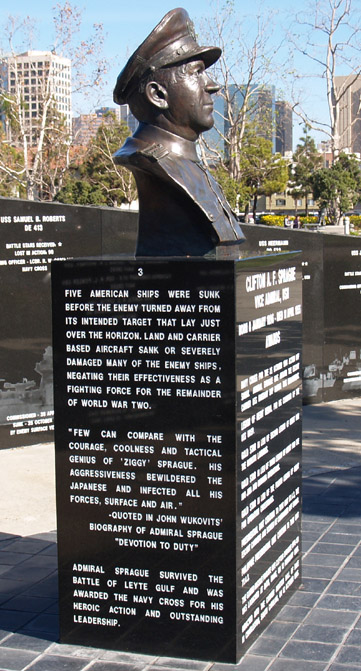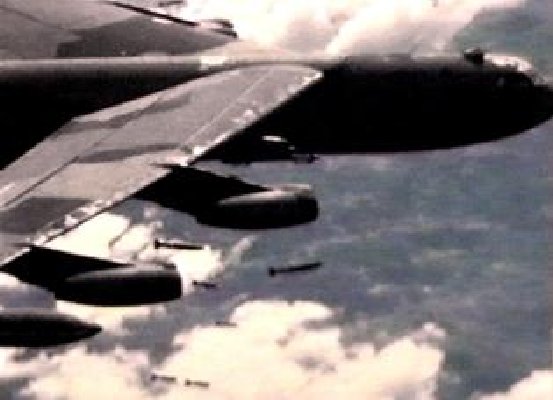Farewell, CAPT Carroll LeFon, USN (Ret)
March 12th, 2012 by xformed
Updated: 3/12/2012 PM.
It’s been a week now, since the phone call from AW1 Tim popped up on my phone in the early evening. I was busy at Home Depot, so I figured “I’ll call him back tomorrow.” Later that evening, before shutting down for the night, I saw the back channel emails and listened to Tim’s message. As soon as the first “F-21 crash” hit my ears, I thought as they did, and s they did, prayed we wouldn’t hear the worst of news, yet still knowing, the minimum: The pilot had died. Bad news would be coming for someone.
I’m not sure exactly when I found Lex’s Blog, but this I know: It was some of the most engaging writing on the blogs, right up there with a Army National Guard CPT from California and the Army Tanker who rolled into Fallujah. All of them were real, and discussed life in the active duty word in terms I could connect with.
Over the many years of reading, along came the only line, highly factual novel: “Rythyms.” What an incredible read that was. I’ve told countless people “it reads better than a Clancy novel, and has enough detail to keep us (vets/military members) in it, yet he explains thing happening on the ship and in the cockpit so people with exposure to the life will understand.” Something about his way with words. He could seat you in the plane, make you feel the launch and the thrills and the boredom and the terror of night landings…
His blog became my “hub” or gateway to other websites in the MilBlogging world, being the first one I checked in for news, humor, analysis, and just life stuff that Lex would write.
I began admiring his writing from the words on the screen standpoint, but also saw something special…actually, many things:
- He was a mentor: Many posts on his site are related to the advice he gave, or was asked on him. Not only did he had great answers, that he shared, he turned the commenters loose to help out. Oh, what amazing guidance, from the old school to the current crop of those in uniform. The comments on any post at his site are not to be missed.
- He was a humble leader. Many of his stories were encoded with that understanding of “the system.”
- Well read, beyond the NATOPS manuals and the like, in classical literature, philosophy, and history.
- He was a leader who valued those working with him. The stories told that, but in this world of blogging, his site was a lot of him leading the way, then having those in the blogoshpere/virtual peanut gallery take over to
- He was a man of conviction. Solid vision.
- A family man, who cared deeply about his real family, and his extended ones.
The man was many things. I only briefly met him and spoke with him at the 2006 MilBlogging Conference. I sometimes emailed him, with questions, or things I found that may be of interest. Some links got published…..I had a response where they were appropriate.
He inspired me at many levels. I, having seen the opening line of his work “Rythyms,” commenced my own version, having stood my first watches as an assigned officer on a replenishment ship that ran with Battle Groups, and many a time, I was watching the carrier to our port side, first as a Junior Officer of the Deck, and later, as the Officer of the Deck, responsible for the comings and goings of the ships alongside, the helos off the aft deck and the supplies moving via “connected replenishment” (CONREP) or by helo (VERTREP). I learned a lot, and he story gave me a foothold by putting the eyes of the OOD of an AOR into the picture. The story is “Life in the Fat Ship Navy,” and is presently an uncompleted work. I have been fortunate enough to have received a few emails over the years, saying how I took tham back to many years ago, and got their minds churning, remembering the sounds, sights and smells of it all. A tribute to Lex’s style, which I endeavored to “mimic.”
But that wasn’t all. His virtual demeanor constantly made me think as to how I might communicate more fully, yet concisely. All of his writing was a model of how to do that….and it begged for being an absorbed quality.
Years ago, I stumbled upon “High Calling: The Courageous Life and Faith of Space Shuttle Columbia Commander Rick Husband”, a similar man, by my best recollections of the read. Devoted to their families, their profession and their faith. While Col Husband’s wife, Evelyn, penned that wonderful book, telling the story of a great man and leader and husband and pilot, Lex’s readers have been able to do this, telling stories of all manner of his life and interactions with others, and conveying how they were blessed by CAPT LeFon’s life. In a week, there are over 1400 comments on the Open Thread, put up by the only other person who could log onto Lex’s Blog, Whisper. If you’d like to see, as someone on Facebook pointed out, what the “dash” on your headstone represents, there are about 1400 descriptions there for the world to see.
—Updated portion—
Shortly after posting, I remembered a few back channel and out in the open discussions Lex and I had. We professionally “CPAed” (Closest Point of Approach) certainly by an association, if not within a few hundred yards of each other in the summer of 1979. It would have made Lex a 3rd Class Middie, on cruise aboard the USS NICHOLSON (DD-982). I was in the Ingalls Shipbuilding yard, as part of the commissioning crew of USS LEFTWICH (DD-984), still, at the time, uncommissioned. I recalled the USS NICHOLSON pulled in on the West Bank yard side for dry docking to repair damaged propeller. It seems she had been backing into a slip in GTMO during Shakedown training and found a coral head near the landward end. Turns out, Lex was aboard at least at the time of the grounding incident, but we found our connection via the Commanding Officer of NICHOLSON at the time. It seems the discussion was something about how “Black Shoe” leadership was so much different from that of the Aviation community. Of course, he could say this then, in the mid-2000s. Turned out I was on DESRON 32 when the same officer was the Commodore, and that, was something we shared in common, despite being separated by time, community and coasts across our careers.
—End Update—
We lost a great man. His wife and family are left with but a legacy, but also the gratitude of many who were positively touched in this life by a man who was larger than himself, yet never penned (typed) a word that would lead you to believe he was anything more than one of us….and in that, there is a great lesson for me.
Category: History, Leadership, Maritime Matters, Military, Military History, Navy, Stream of Consciousness | 3 Comments »




![Reblog this post [with Zemanta]](http://img.zemanta.com/reblog_e.png?x-id=b0d312b3-abeb-47bc-a796-a5d0e5c45805)